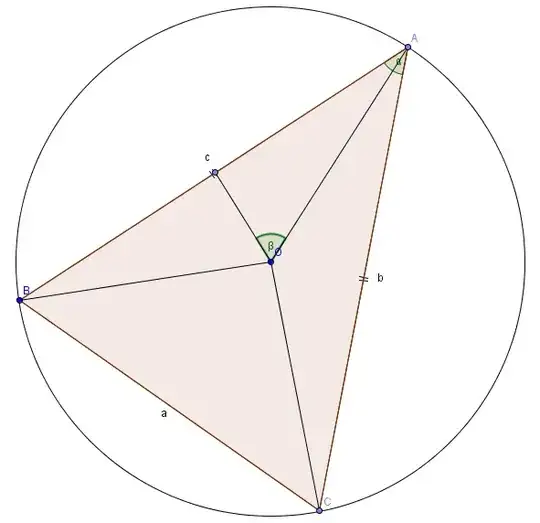So I have seen this question asked before but with variations (circle of radius 4, and an equilateral triangle) and so I am hoping for an answer on how to do this.
After looking around I saw that people assume that the maximum perimeter of such a triangle is equilateral, meaning you have all the degrees. I wanted to ask how to actually prove that or something. I was given this problem on an exam and I usually sit down and do them just because I like solving these kinds of problems but I couldn't get it to work because I got too many messy equations and I had no time to clean up. What I'd like to ask is what is the best way of solving this, if you don't assume this?
When I tried to solve it I thought that I could do it like I would do with a square:
Find an equation
f(x) = 2*(sqrt((1 - cos x)² + sin² x) + sin x) => perimeter
and then get
f'(x) = 0
and find what angle would satisfy those conditions. What I got though is a mess of trigonometric stuff that I found impossible to solve (my memory is bad so I easily forget formulas for trig. functions).
Anyway, was I doing the right thing but I may have messed up with the formulas or is there something I could do instead?
Visually what I did was thinking of the triangle's height being the x-coordinate from $x = 1$, so with an angle of $2\pi/3$ I get height = 1½ for example. And then the base would be just $\sin{ (2\pi/3)} = \sqrt{3}/2$
Anyway, that was just an example to try to explain how I was thinking when I set the equation up. I bet there's a better way that I'm not seeing. And I want to know how to prove things so if you want to tell me something like "this is always true for ..." please give me a link to an/or explanation of why that is so.
